SHOPPING
fragrance lab
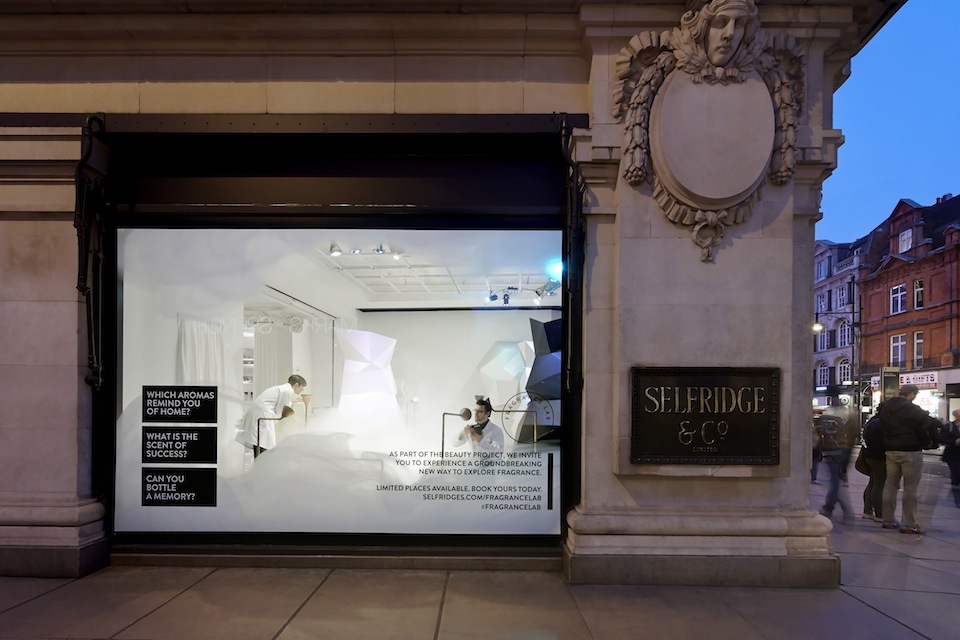
Fragrance Lab-®Hufton+Crow
Since it opened in 1909, London department store Selfridges has been defined by a special devotion to modernity. Its historic willingness to be ahead of the pack is mirrored in its Concept Store – a space where the department store regularly tests out innovative and sometimes outlandish retail scenarios.
In its latest installation, Selfridges, in collaboration with trend-forecasting agency The Future Laboratory, design studio Campaign and perfumers Givaudan, proposes The Fragrance Lab – a new way of discovering and buying perfume. The experience starts at home, as customers (guests) are asked to book an appointment with the Fragrance Lab, building anticipation so that they are already invested emotionally (and financially) when they arrive. At the Fragrance Lab, guests are invited to answer a dozen questions on an iPad, picking out images and statements which they feel best represent their personality. They then go through an olfactory itinerary (3 rooms) following instructions from an audio guide. In the last room, a fragrance technician (a salesperson in a lab coat) offers the guest insights into what makes them distinctive as a person, and how this has been translated into a scent (one of a secret number of perfumes that Givaudan has prepared especially for the Fragrance Lab).
This is the “Experience Economy” come to life. The two current staples of shopping – browsing and choosing – have effectively disappeared. Instead, the “Lab” pushes tailoring and personal shopping to their extreme. In an ethereal setting cut out from outside distractions, guests are invited to individually learn about and ponder the significance of scents – how they affect perceptions and confer meanings. This part of the experience is didactic, deepening the customer’s knowledge of fragrances so that they will later fully appreciate the perfume that has been picked out for them. At the same time, guests have the opportunity to embark on an “ego trip,” where they feel that the salesperson has taken the time to understand them fully as a person.
This peaks when the fragrance technician gives them the horoscope-like reading of their personality, and proposes a perfume which reflects the highlighted character traits. This is where the experience is at its most masterful, suggesting expertise: the fragrance technician knows which scent is most appropriate for the guest, who often walks away with an intriguing smell they would not necessarily have picked for themselves but slowly grows on them.
In its essence, Selfridges position the store as a space where learning and reflection are central. At the same time, because the experience is deeply personal and appeals to a certain narcissism inherent to personality tests, customers are led to create meaning and form a special bond with a fragrance, which they can rationalize and will become attached to. Should retail environments go beyond hedonism and incorporate ‘learning’ elements? Will customers trust brands to make decisions for them, especially when it comes to such personal items as perfume? The Fragrance Lab poses important questions as to the future of retail and ultimately recaptures different phases of the customer decision-making process (from the information search through to the product choice) to propose new uses for physical stores.
Mathilde Leblond
At Selfridges London: 1 may – 27 june 2014
www.selfridges.com/fragrancelab
Mathilde Leblond is a UK-based trendwatcher with a passion for creativity, beauty and the future. For Trend Tablet she contributes posts about some of the most arresting artists and creators which she scours the internet to find out about.
mathildeleblond
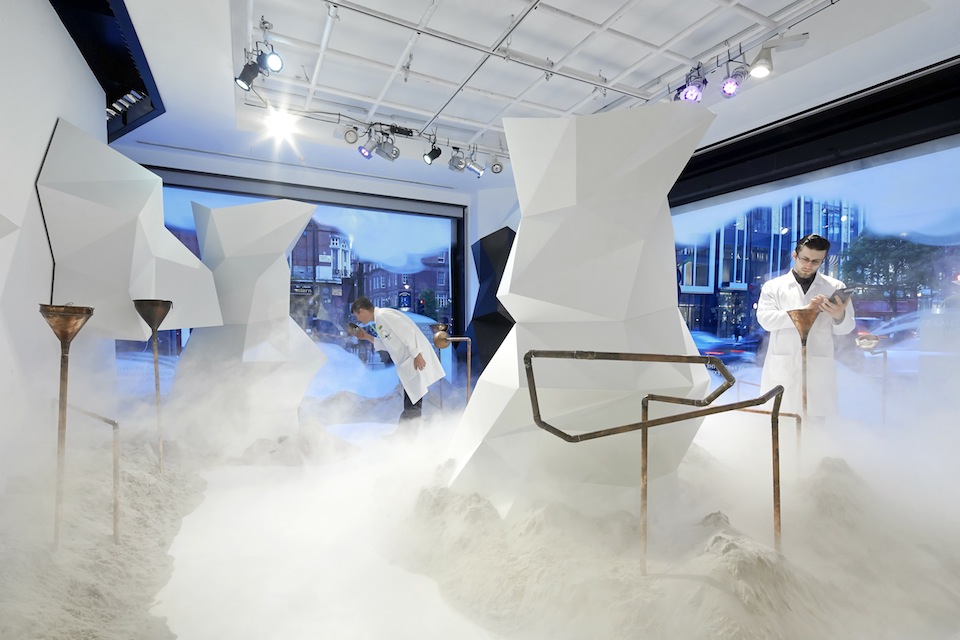
Fragrance Lab -®Hufton+Crow
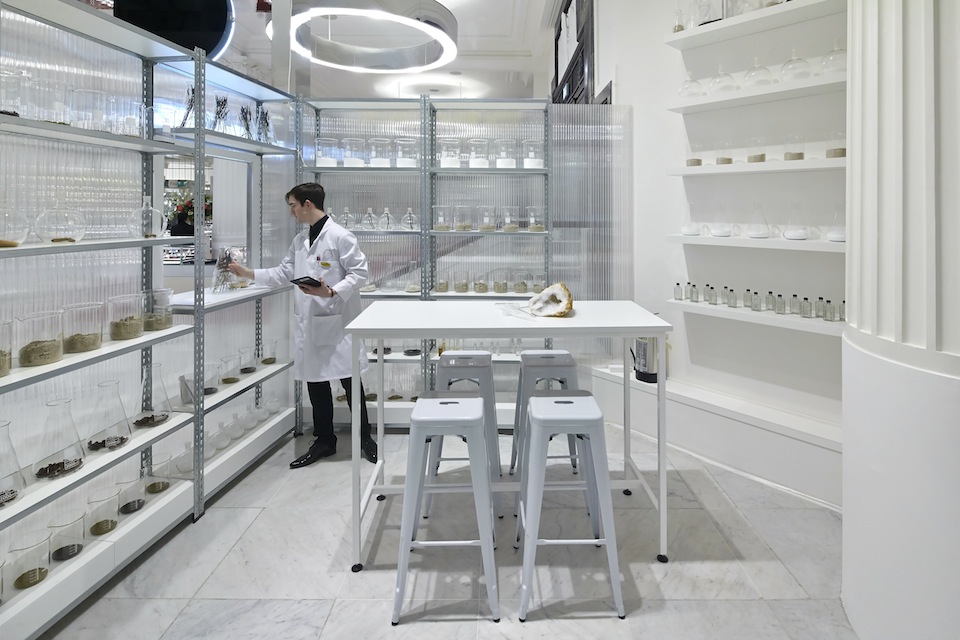
Fragrance Lab -®Hufton+Crow
ciguë
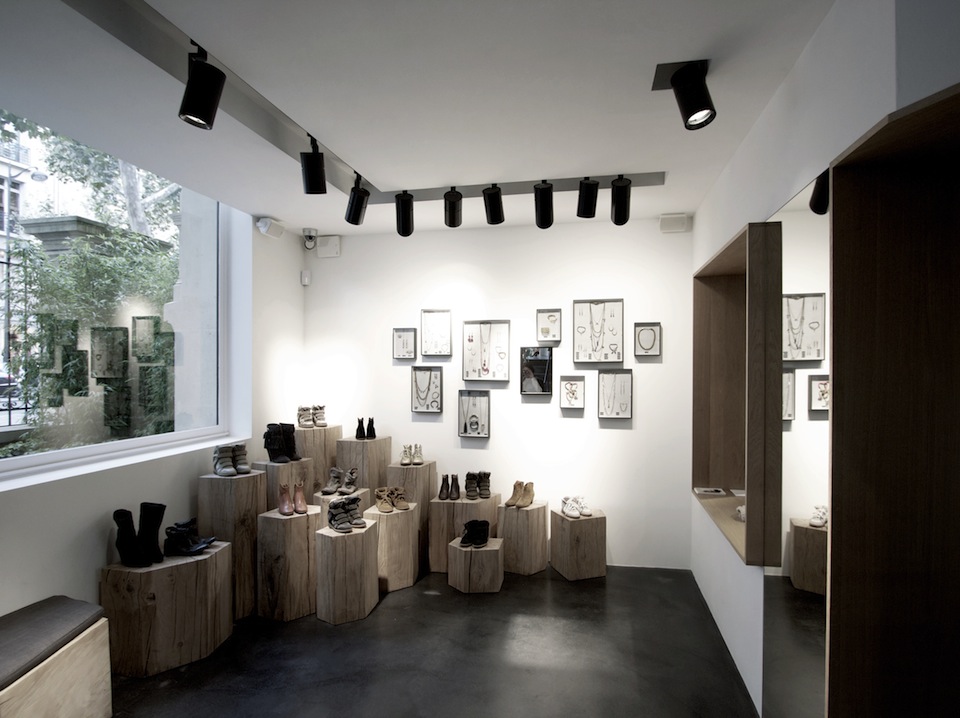
Isabel Marant Paris - Photo by Maris Mezulis
Six architects and friends founded Ciguë in 2003 with a common passion for finding the authenticity in things, materials, spaces, and situations. Ciguë designs and builds as one continuous process, from concept through prototypes to nished production, going back and forth from the desk to the workshop.
Some of Ciguë’s clients are: Céline, Diane Von Furstenberg, YSL in Dover Street Market London and Tokyo, Aesop, Merci shop in Paris, Damir Doma, Isabel Marant, Krisvanassche, Tomorrow land, Alain Ducasse.
We met Cigüe 's team and asked them some questions to better understand how they are changing the experience we have with shops.
Describe for us your design philosophy. What is authenticity important for you?
We are interested in weaving creations into their context. We try to give meaning. Everything should be made for a specific time, place and purpose. We're eager to understand, in a general way. Instill and/or reveal flavor in things. Materials, processes, stories, people, have key roles for us. That might be how we practice authenticity.
You have designed many shop interiors. What is your particular approach for their design?
Our background is architecture. We attach great importance to the dialogue we set with the brand, on a specific project and on a duration. We need each design to be specific and responding to its context. We cannot fit in the global copy-paste around the world design formula.
In parallel of those bad habits, retail design has always been caught up in fashion trends. In recent years, with the internet and bloggers, new shop designs are seen instantaneously, everywhere. The race for the latest and greatest idea has accelerated out of control. Designers are overwhelmed. They no longer have time to think, research and develop ideas and more than ever, shop design has become aesthetic decoration.
Our approach tries to slow things down and make an authentic design that is solidly anchored in the history of the brand, the physical context of the shop and the needs people that will use the space. We try to break out of the binary 'buy-sell' format and work profoundly on the space itself, creating hybrid spots that offer different possible experiences.
How does the design process vary between, for example, a shop interior and an installation?
Those are two very different things. First because of their nature then because of their temporality.
In a retail context, an installation is window dressing and decoration. This is not our job. We work on spaces, functions, atmospheres.
The best way to describe retail shop design is by using an example. For Isabel Marant's Tokyo store, we chose to push one of our leitmotifs to its limit: stripping back a space to reveal its true nature. We stripped out all of the plaster panelling from a wooden frame Tokyo house leaving nothing but the timber structure and wood panels. The joists and bearers were then added to and modified to accommodate the shop's technical requirements. It feels like you are walking through the bare bones of the former house.
For commercial projects, are there a specific set of expectations by the client?
All projects and clients have specific expectations. What is interesting is when they are ready to question them to go further. That is how we can create a dialogue and write a real story.
Where do you see Cigüe going in the future? Could you tell us about any upcoming or future projects? Where would you like Cigüe to go?
We like to believe there's no limits. Crossing disciplines, learning from elsewhere, staying open, makes our job very interesting. We'll head towards many directions but in a very precise way. We'll continue to develop tailor made processes, play with scales, push for experiences. And keep it as exciting as it been till today.
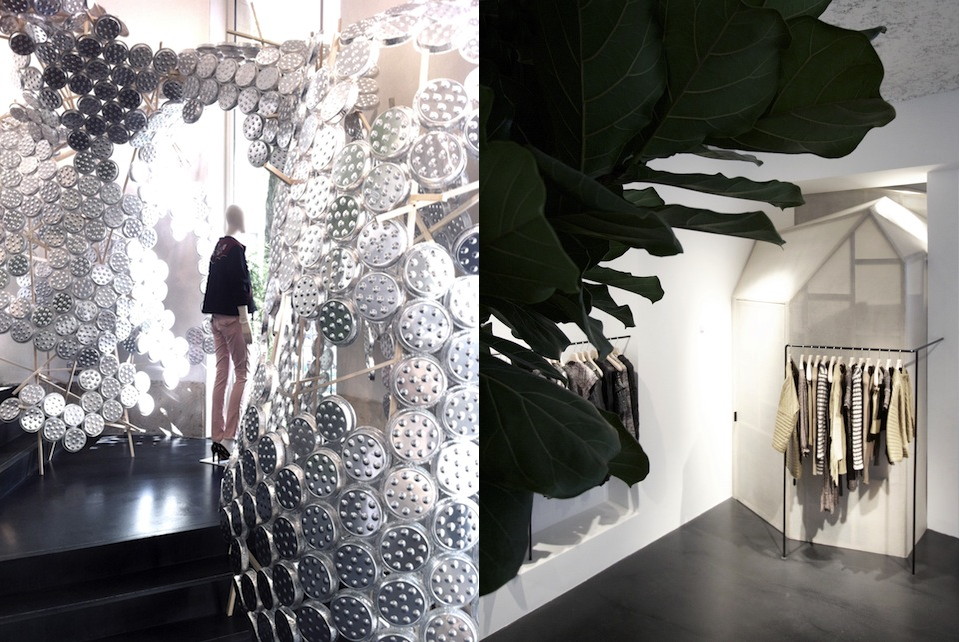
Isabel Marant Paris - Photos by Maris Mezulis - Aluminium Installation by Arnold Goron
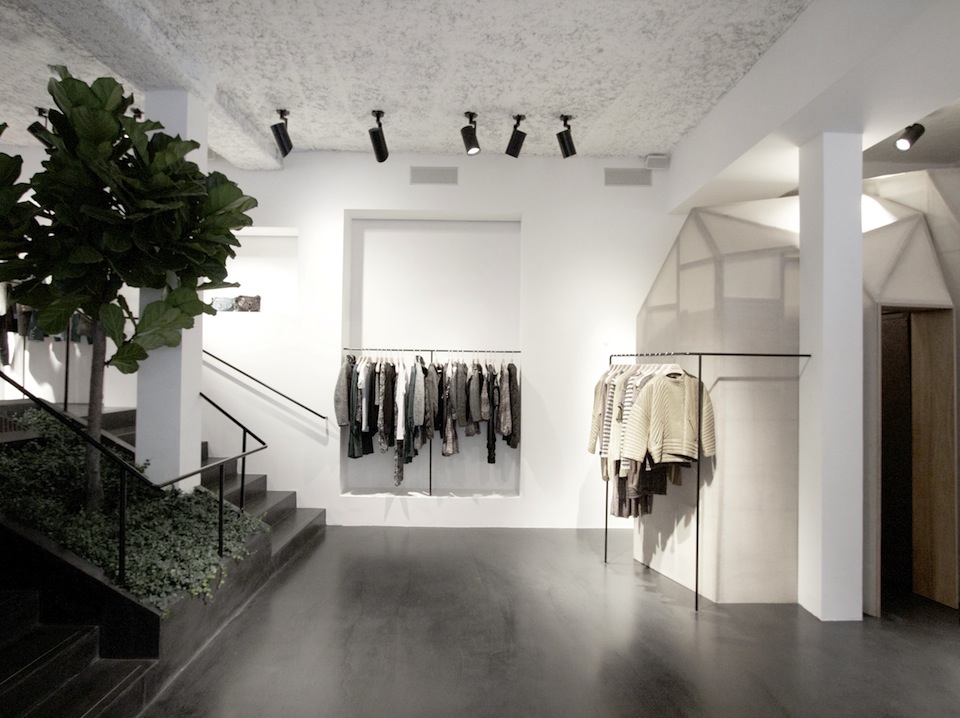
Isabel Marant Paris - Photos by Maris Mezulis

Isabel Marant Tokyo - Kozo Takayama & Ciguë

Isabel Marant Tokyo - Kozo Takayama & Ciguë

Isabel Marant Tokyo - Kozo Takayama & Ciguë
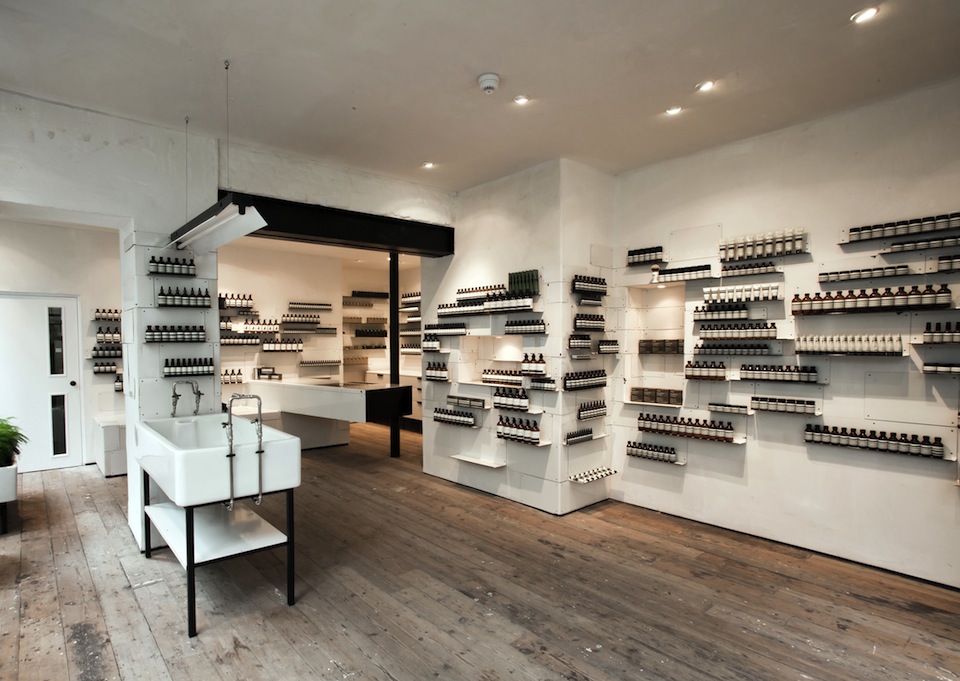
Aesop Lexington- Credit Kalory Agency & Ciguë
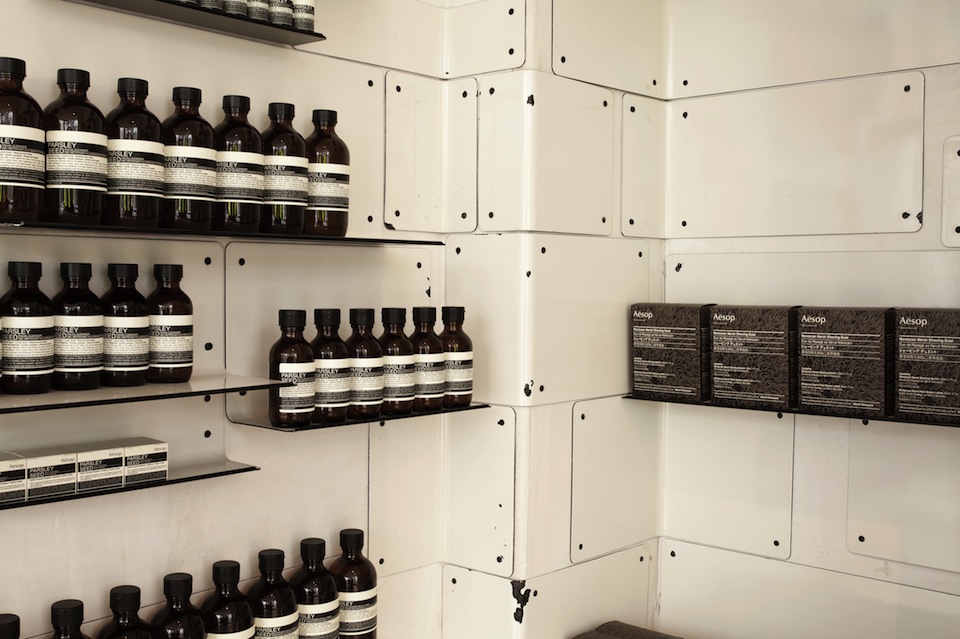
Aesop Lexington- Credit Kalory Agency & Ciguë
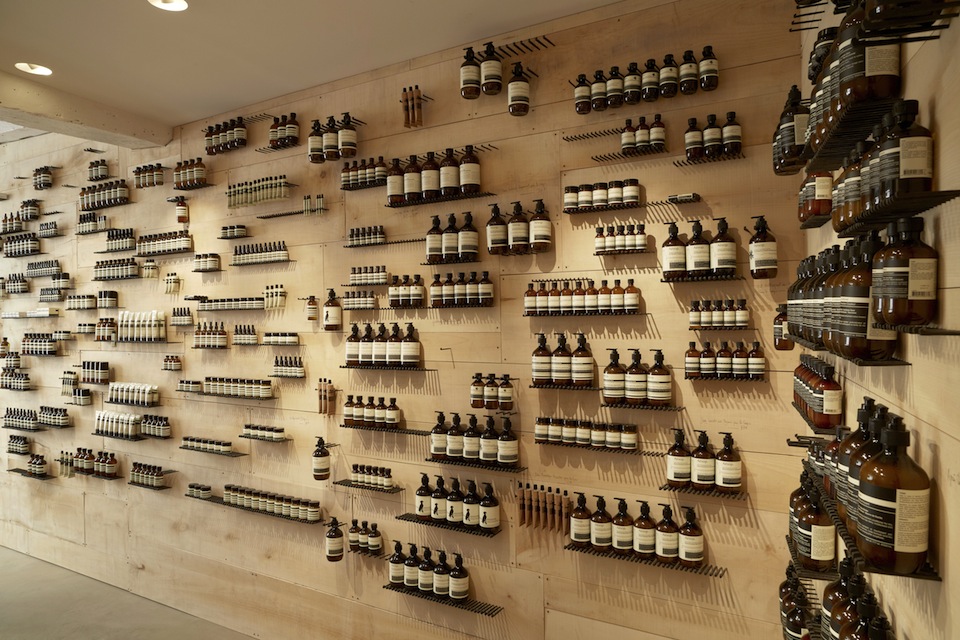
Aesop Tiquetonne Paris- Credit Louis Basquiat & Ciguë
a new vintage experience
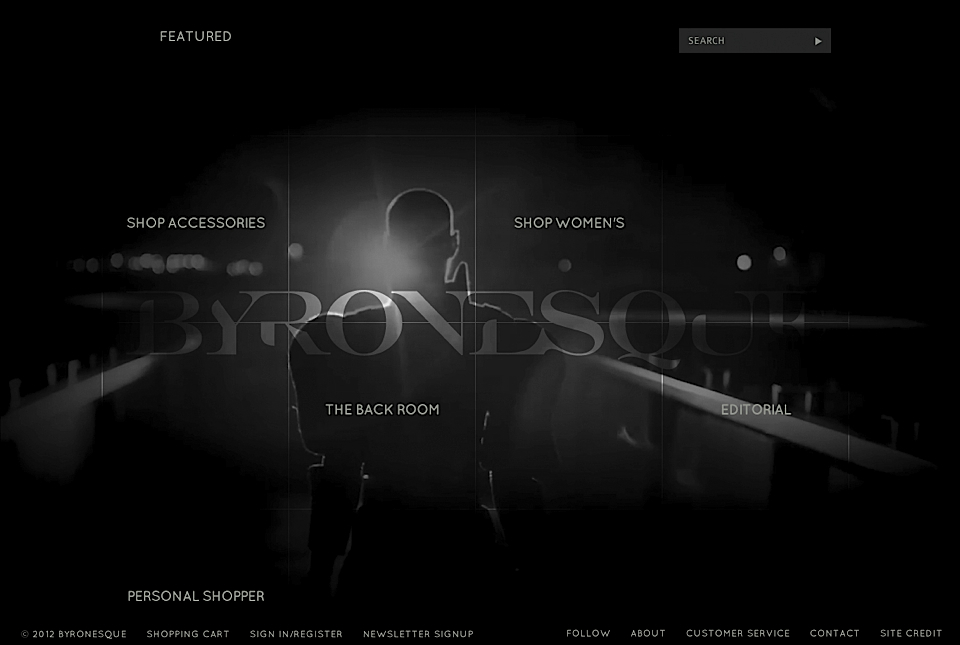
Sophie Hérolt Petitpas is a french journalist free lance found of design and lifestyle. She is also passionate by astrology and its mythical and symbolic aspects. Curious and sensitive, she loved linking and describing her trend hunting with the eyes of mythology in her blog.
Are you ready to live a new experience of shopping, learning about fashion history, listening expert talking about vintage spirit, in a dark and aesthetic atmosphere? The E Community and E Shop Byronesque launching in October 2012, propose a new way to buy and get inspired by vintage, a vintage far away from the “cliché”, the marketing and the fast fashion buzz.
To enter in this uncommon world and understand the philosophy of this enterprise, listen to Gill Linton the Editor in Chief of Byronesque :” Everyone on the team is frustrated about the mediocre culture of fast fashion and the banality of editorial online. There’s almost nothing for people who don’t want to look like everyone else and who want a more considered and intelligent perspective on fashion. Vintage has become an abused marketing buzzword used to sell everything from thrift, resale and outdated design considered good just because it’s old. Real vintage is 20 years old, or older, designed by people who pushed imaginations and whose creativity still challenges us to demand more today— our goal is to establish the first industry standard. We’re collaborating with people who inspire us to demand more than fast-fashion knock offs and vintage that makes you look like an extra from a period drama. So much of fashion editorial and e-commerce is repetitive because everyone’s chasing the same stories and trends. Our goal with Byronesque.com is to provide an antidote to fast fashion and culture with vintage that is provocative, dark and sexy - inspiring people with the unique stories behind each piece and the subcultures that wore them. There’s no subculture anymore. And people buy too much crap.”
Byronesque brings to us a community of creative and vintage retailers who care about well made clothes by designer who stimulated people imagination 20 or more years ago. This website mixed in an equal part fashion, culture editorial and curated shopping experience. This E Shop is the first one to experiment this requirement in the fashion industry. If you will be able to discover some treasures designed by Alaïa, Issey Miyake, Jean-Paul Gaultier, Claude Montana, you will also find the contribution of the most important characters and contemporary in fashion history, people who inspires new generation. Creative such as Diane Pernet, Zebra Katz, A F Vandervorst, Simon Collins, Eve Salvail, Kate Lanphear, Roger Burton, Rad Hourani, Boy George have contributed for the first round of content.
The e-commerce component is inspired, curated and edited by some of the fashion industry’s leading vintage experts. Renowned fashion stylist, Renee Bejil closed down his iconic NYC vintage boutique, New World Order, to sell his entire collection exclusively through Byronesque.com. Taking on the role of Head of Merchandise for the brand, Bejil has selected designer vintage clothing and accessories from the most progressive vintage boutiques and private showrooms in London, Paris, and New York. A lot of these pieces will be available to the public for the first time ever through the site. While there are plans to add more retail partners quickly, they intend to protect their online boutique experience from becoming and overly crowded online market place. A place where vintage talks more about future than past and nostalgia.
Sophie Hérolt Petitpas
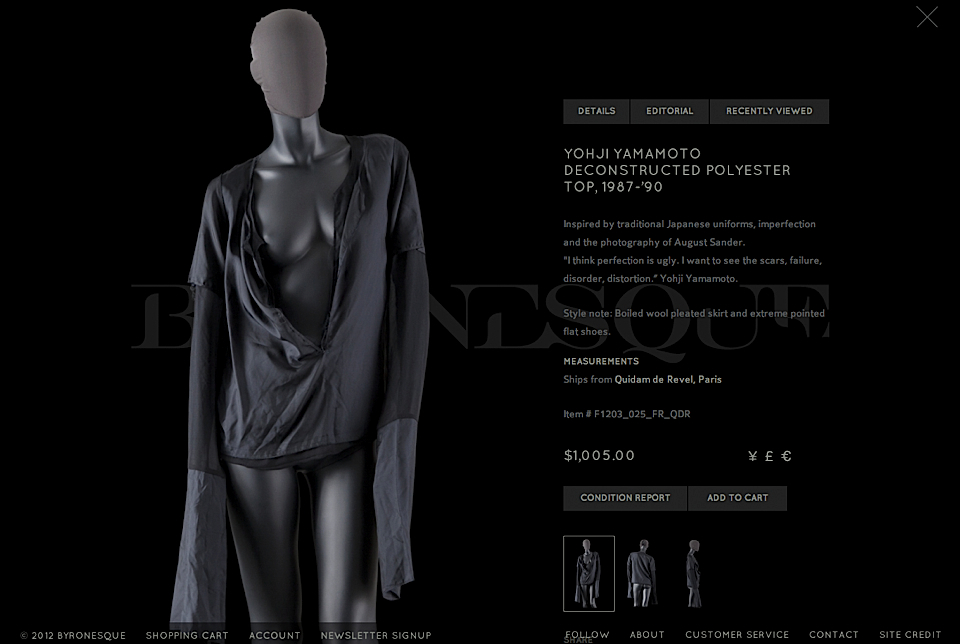
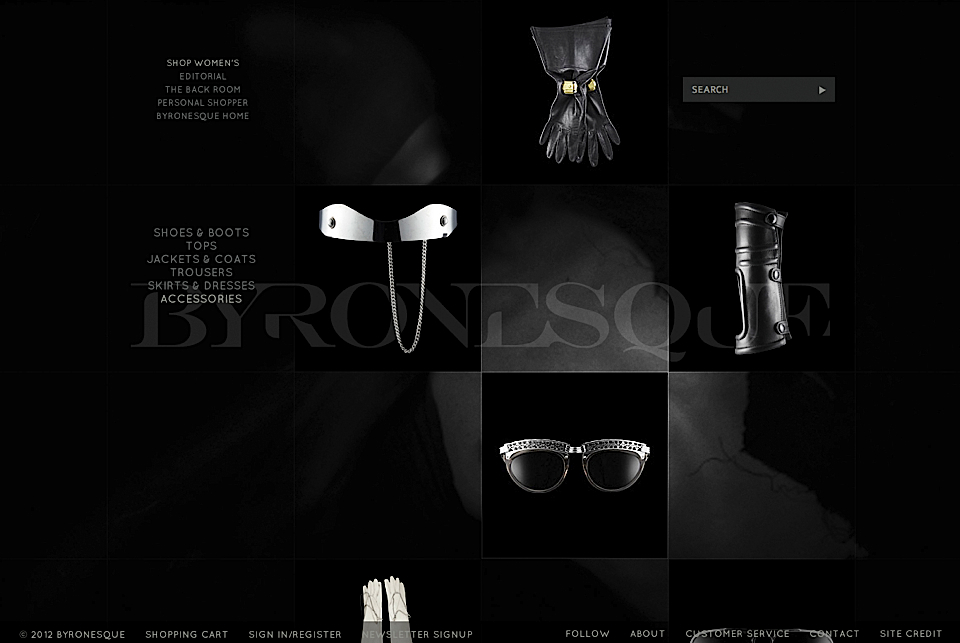
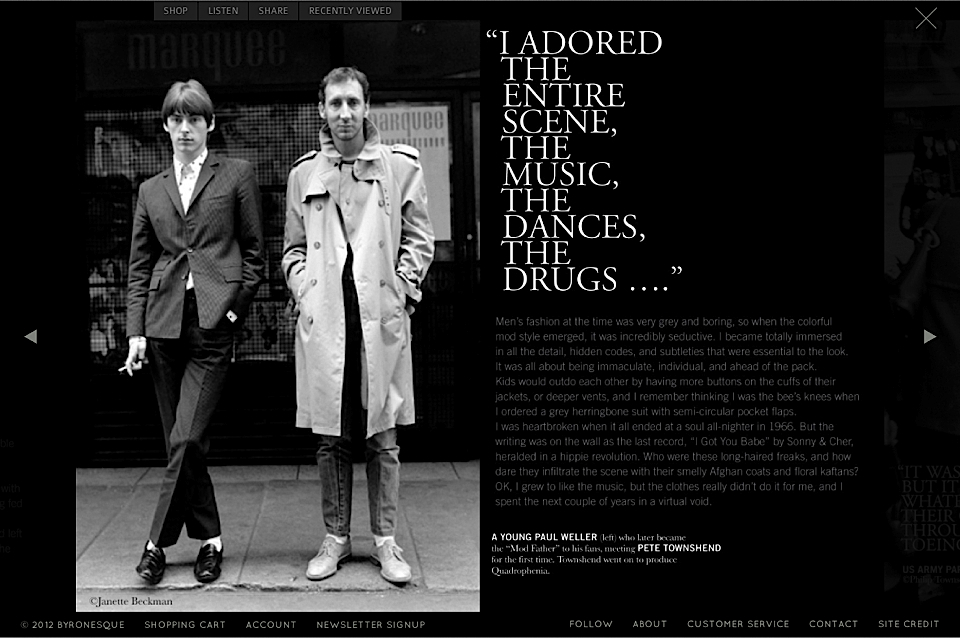
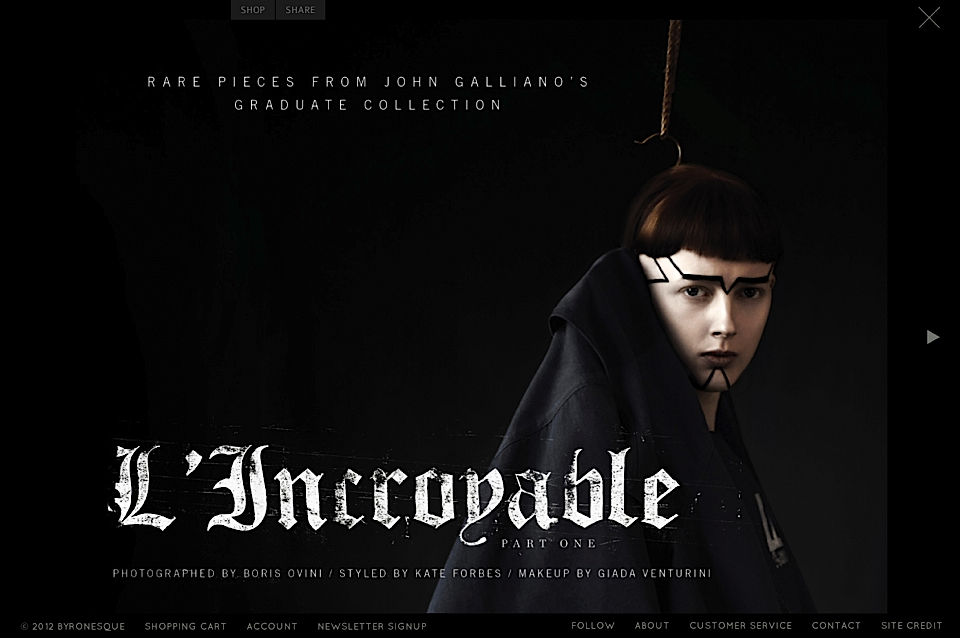
Rentez-Vous
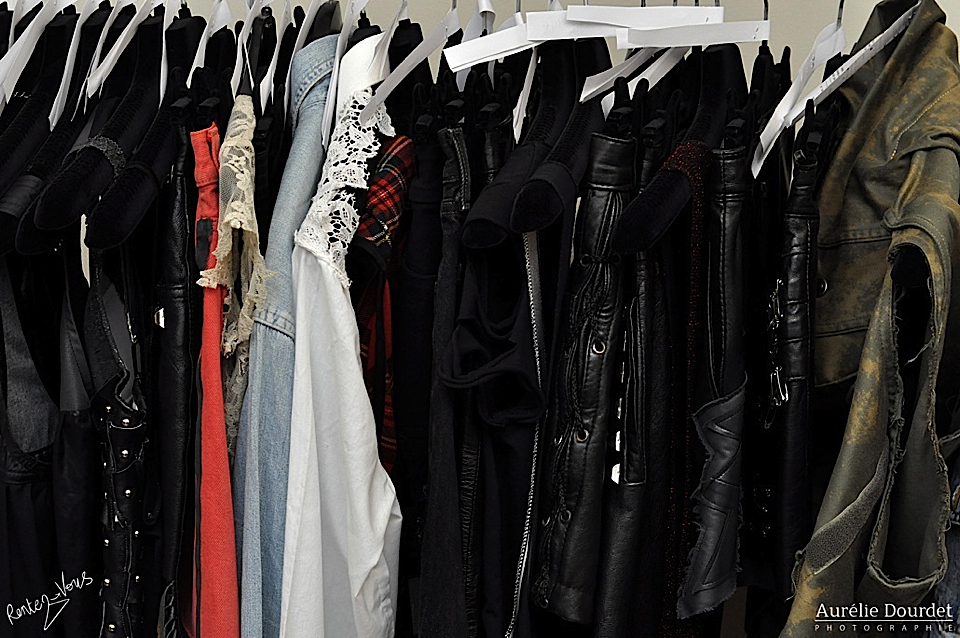
The everlasting fashion dilemma still exists today: our wardrobes are full of clothes and we never have anything to wear! For most of us - girls-, our wallet can't follow our desires and we are often frustrated while so many of our still very nice clothes go to waste in our closets. Instead of over-consuming, why not share our clothing and spread the joy around?
A new system called Rentez-Vous may help to solve our communal fashion problem by proposing an innovative concept. Mixing "rent" and "rendezvous," the idea behind Rentez-Vous is to connect people through their closets. Meetings are organized in which participants can rent out their own clothes and rent out items from another. The goal is to offer a unique shopping experience and a more accessible and collaborative fashion, also involving emerging designers to get their creations on the street.
As we are more accustomed to the growing 'share economy,' promoted by innovative ideas like those of Fiona Disegni who is the mind behind Rentez-Vous, renting clothes becomes a usual and exciting alternative to buying. A sustainable and community-oriented shopping experience!
Now only in Paris, Rentez-Vous will launch in London this Friday, November 23.
So join the movement and spread the word!
More Details + Register on Facebook
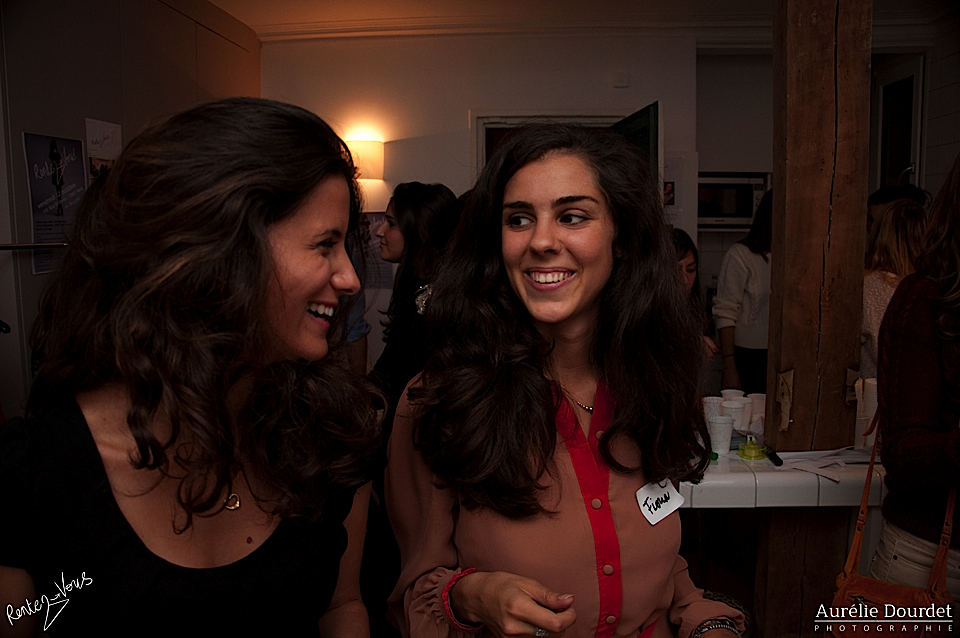
l'exception
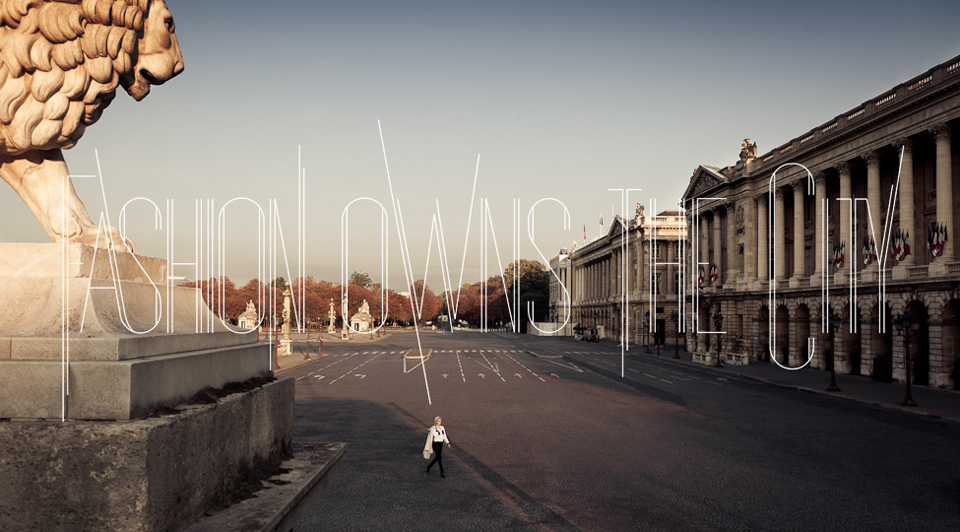
photo courtesy of l'exception
L'Exception is more than a concept store online: it's a collective project, a new way to shop, to see and deal with consumers and designers !
L'Exception's team was getting bored of wearing widespread brands’ clothing.They decided to look for something real behind the act of shopping. They wanted to know the people who make products, find someone human behind a jacket or a pair of shoes. Everybody has a story, a dream, what's yours ?
They introduce their "coup de coeur": only the best pieces from designers and free brands, working like artisans. The kind of people that take care of the quality of design and choose carefully the matters for the best final products.
On their website, l'Exception's team publish personal interviews of each designers and make "magazines" with nice photos and videos to tell us the story behind the product. You can also discover the selection of beautiful books and magazines, made by the parisian reference bookshop 0fr.
A real fresh wind is blowing so, take your time to enjoy your shopping!
Caroline Aufort
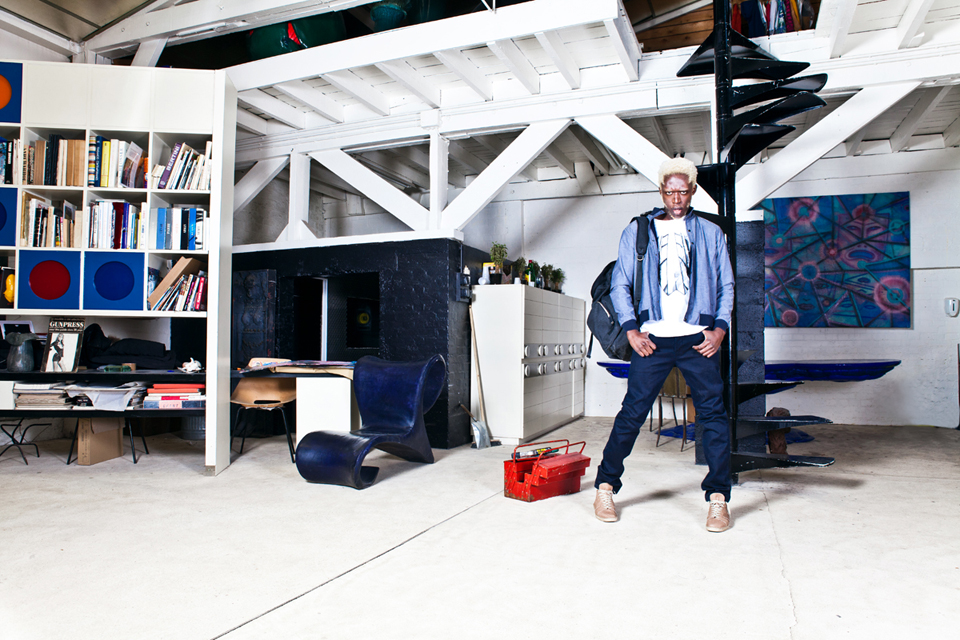
photo courtesy of l'exception
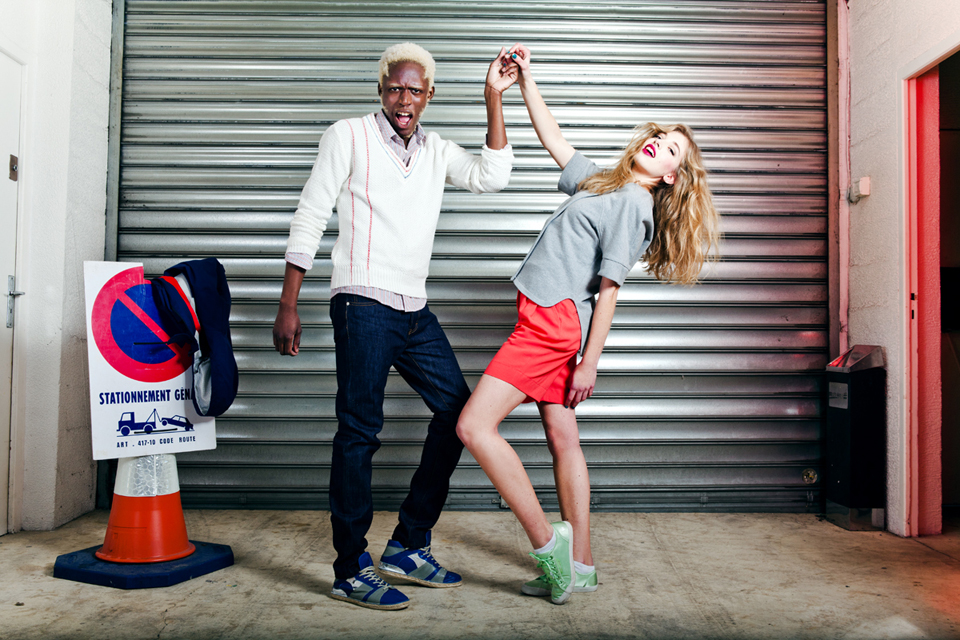
photo courtesy of l'exception
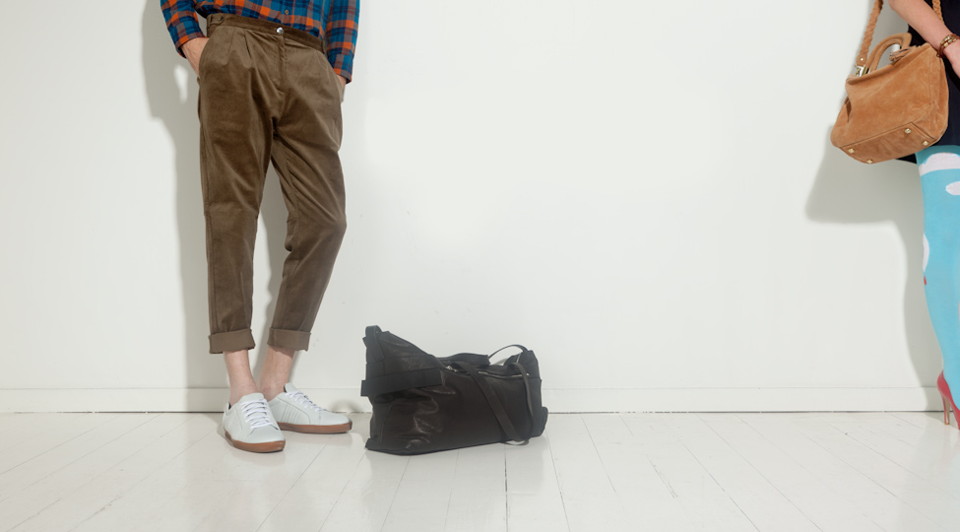
photo courtesy of l'exception
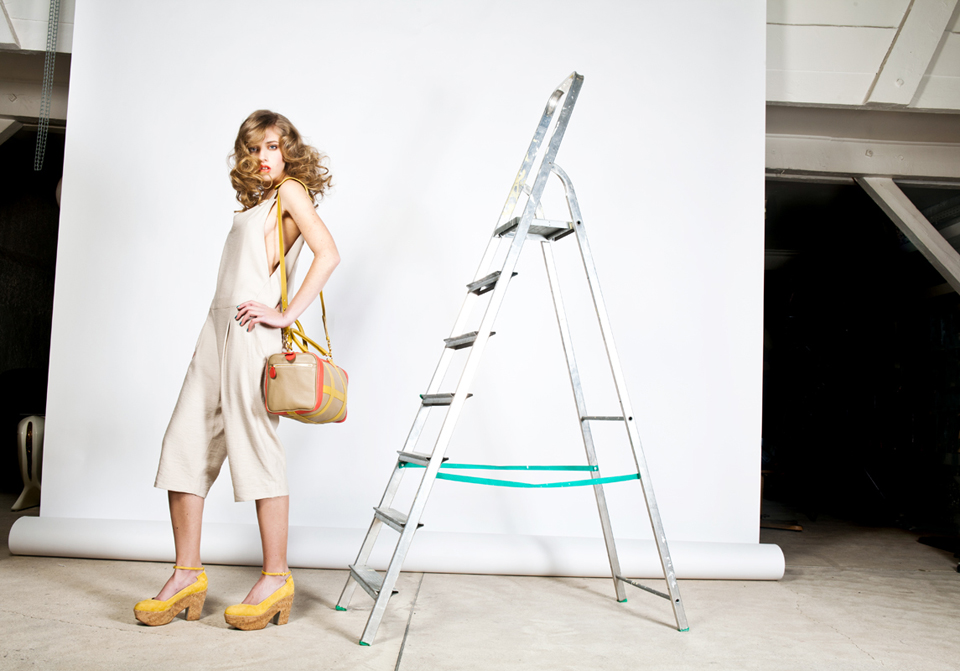
photo courtesy of l'exception
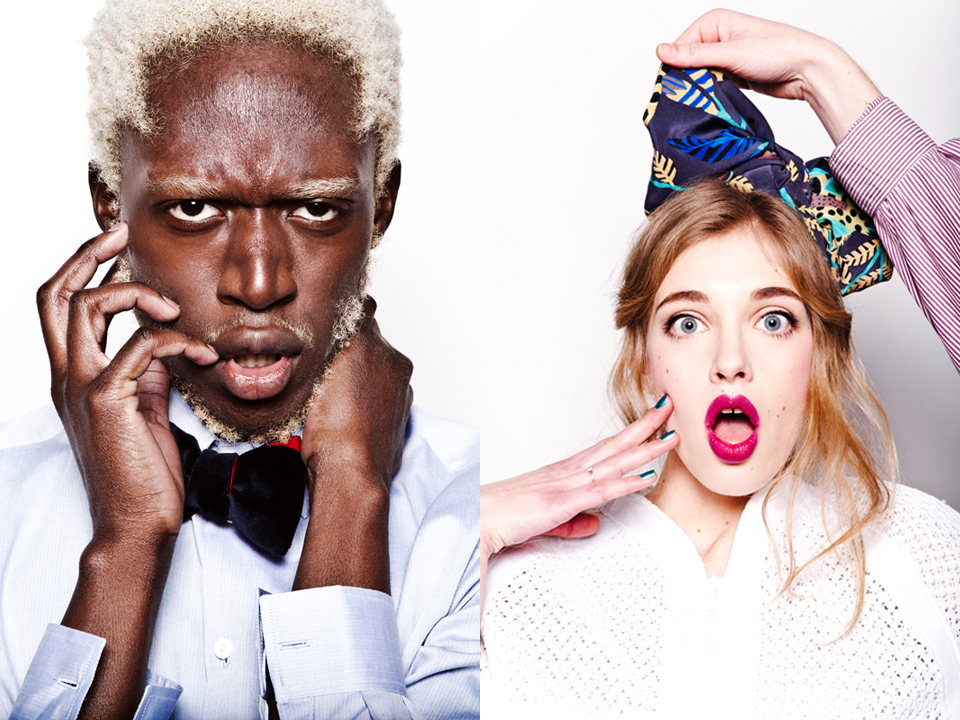
photo courtesy of l'exception
reinventing retail for the 21st century
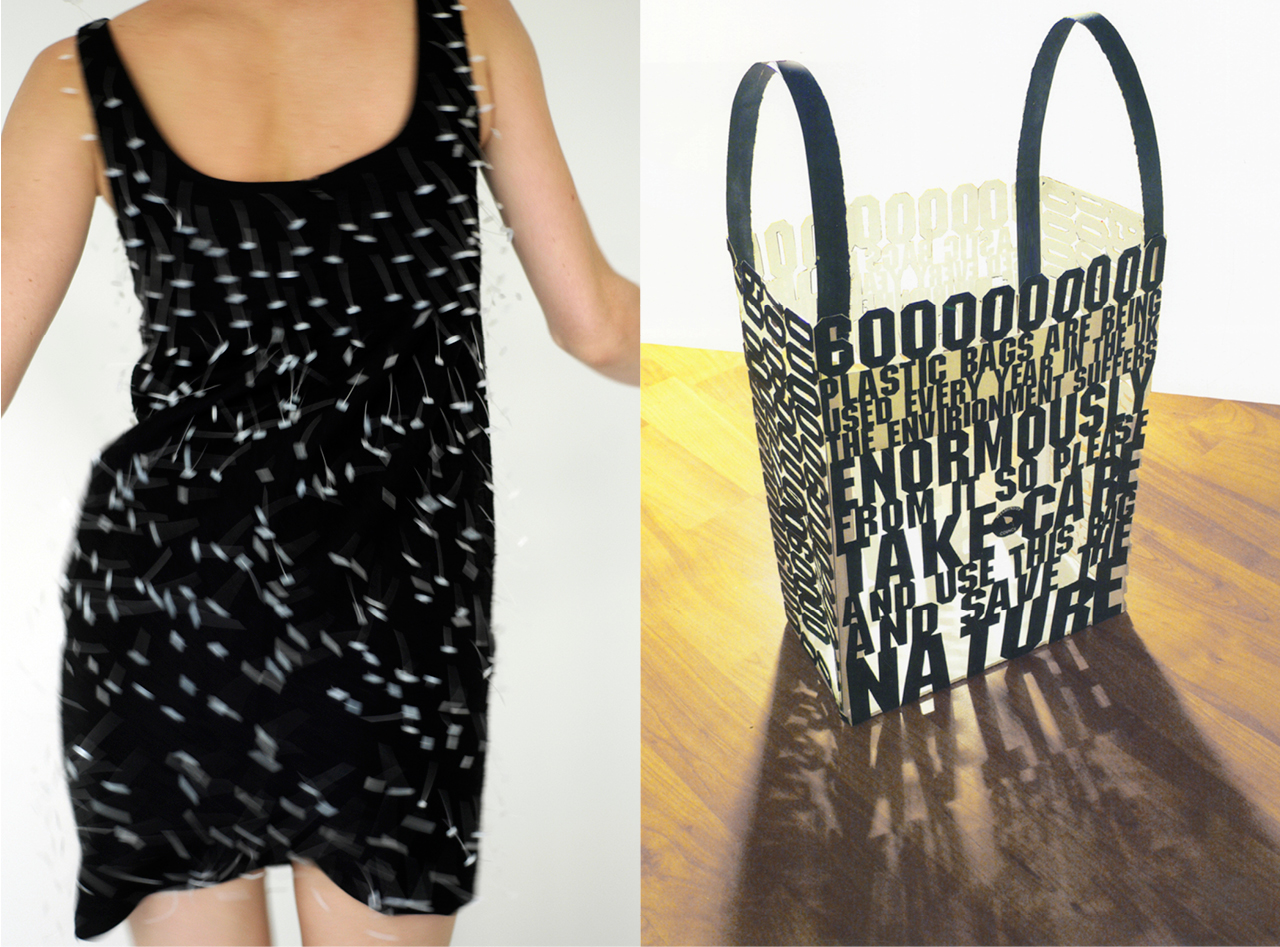
dress vintage moschino photo by imke klee
most brand and shop concepts today date back a long time, and are sometimes as old as a century or more. many important department stores in the world will soon have major anniversaries celebrating between 100 and 150 years of business. several couture and luxury brands were established in the early years of the 20th century, and many important ready-to-wear brands go back to the 60s and 70s. designer brands with vertically integrated production and retailing emerged fully in the 80s and are still thriving today. the revisiting of couture and luxury houses, as invented by karl lagerfeld for chanel in the 80s, has seen a general facelift of the category over recent decades. the swinging 60s brought us the boutique; the 70s, the high street stores; the 80s, the globalisation of branding emporiums; the 90s, the invention of the concept store; and the turn of the century, the even cooler online shopping.
so far this century doesn’t yet have its own shopping innovation and environment. the fashion industries keep delivering drops until we shop, and against all odds, the status quo of retail seems to project business as usual far into our future...
indeed, the outer shell of shops has changed, with landmark architecture branding the luxury houses, and recently even certain volume chain stores, bringing high and low even closer than ever. however, the inner mood and mentality of shops has not yet been reinvented, and is in need of creative and conceptual thinking.
mood marketing will replace all other research disciplines trying to rekindle and improve the relationship with consumers in the future, and therefore will require very different store environments and shopping mentalities. shopping will need to become a trip within our inner selves to satisfy our complex needs and wishes, and therefore needs to be addressed in a truly innovative manner, to reach the consumer on another, more private level.
imagination, improvisation, intelligence and humour are needed to redefine the shopping experiences of tomorrow. to engage in a new dialogue with our clients, to anticipate their every wish, to service their every whim, to satisfy their hidden desires.
to bring them together in a social space.
for fibre and textile manufacturers, retail is the end of the road, yet this time around it will be the beginning. therefore this trend forecast is announcing new ways to shop, better ways to serve, creative ways to install and original environments in which to retail.
lending space to the inner human, making room for intimate well-being, building up a greener society and travelling to a future mentality, as if streaming in a physical way.
this means that the role of designer and product developer becomes more complex and more amusing. textile, fragrance, flowers, candles, books, food and design all get together to communicate. one needs to give form and content to a collection, to edit and script the proposal, to design the interior, to direct the movie, to research the music, to invent services, to customise products, to co-create merchandise, to host special events and to psychoanalyse the public.
this imaginary pop-up department store is designed to let us dream of different, more courageous and engaging concepts, of another era in store design and packaging, of a consumer-driven environment full of life and wonder.
of a period to enjoy.
_lidewij edelkoort
10 – 11 – 10
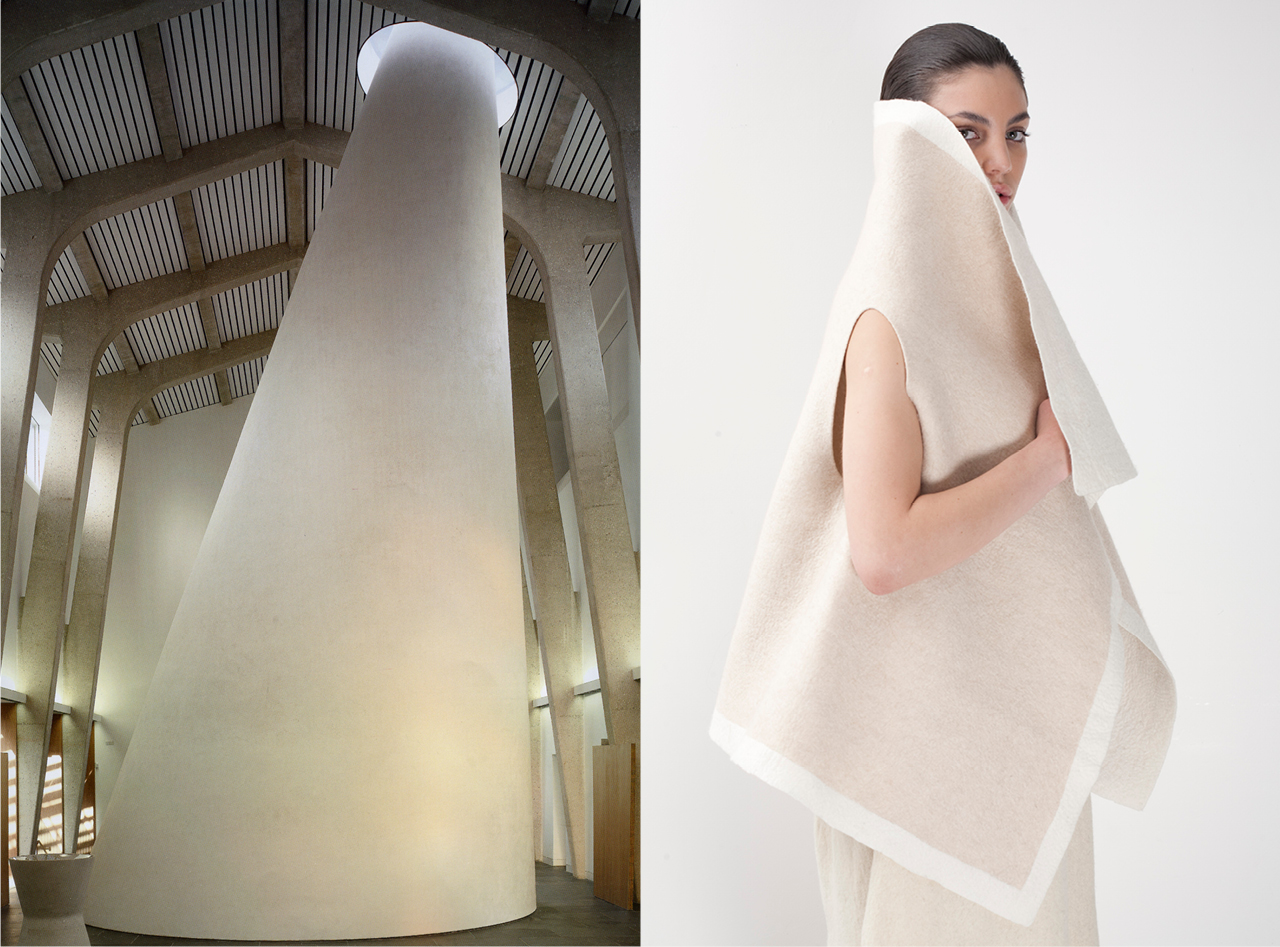
design by theis + khan architects
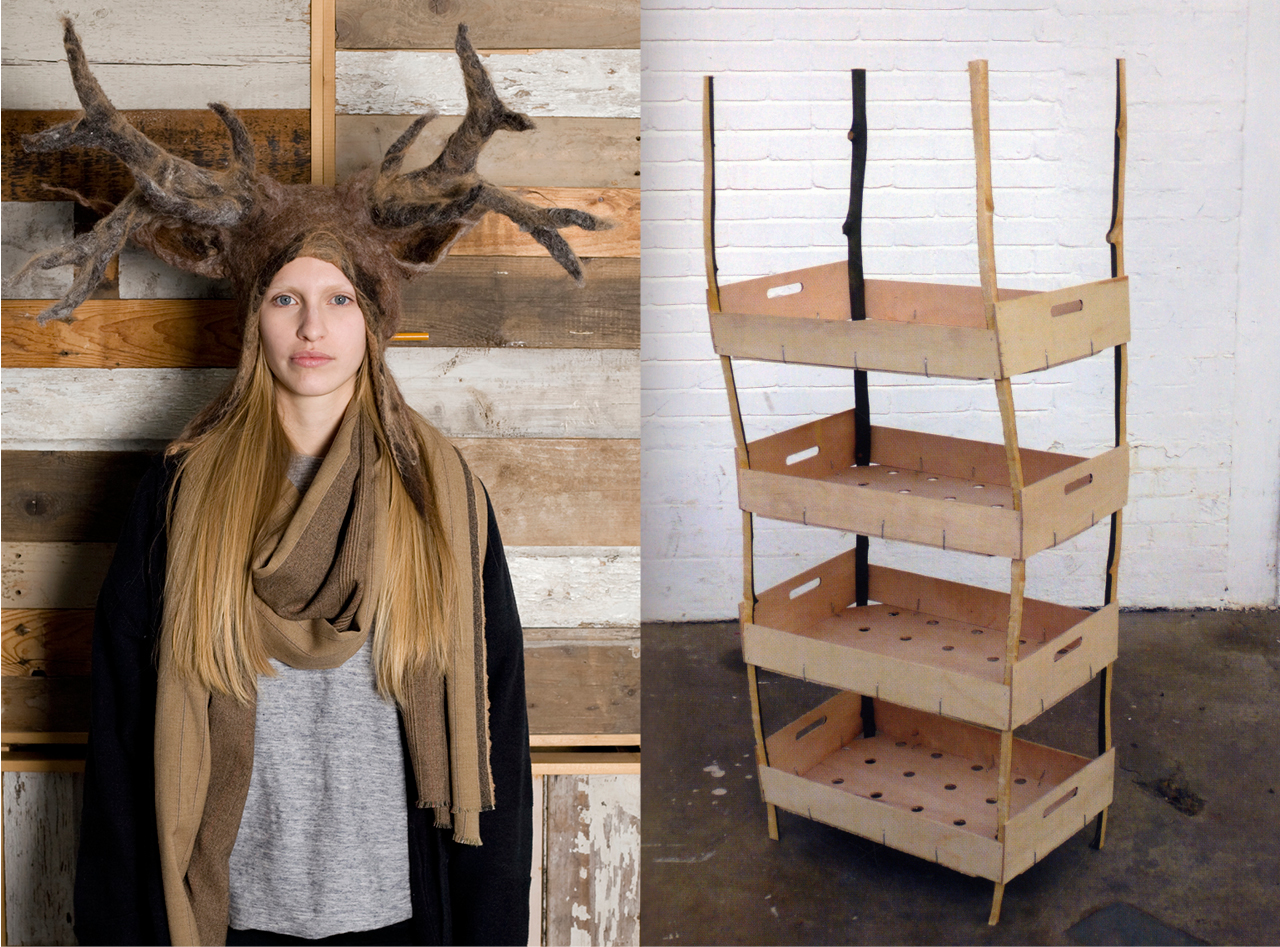
felt hats by barbara keal, photo by imke klee . design by peter marigold
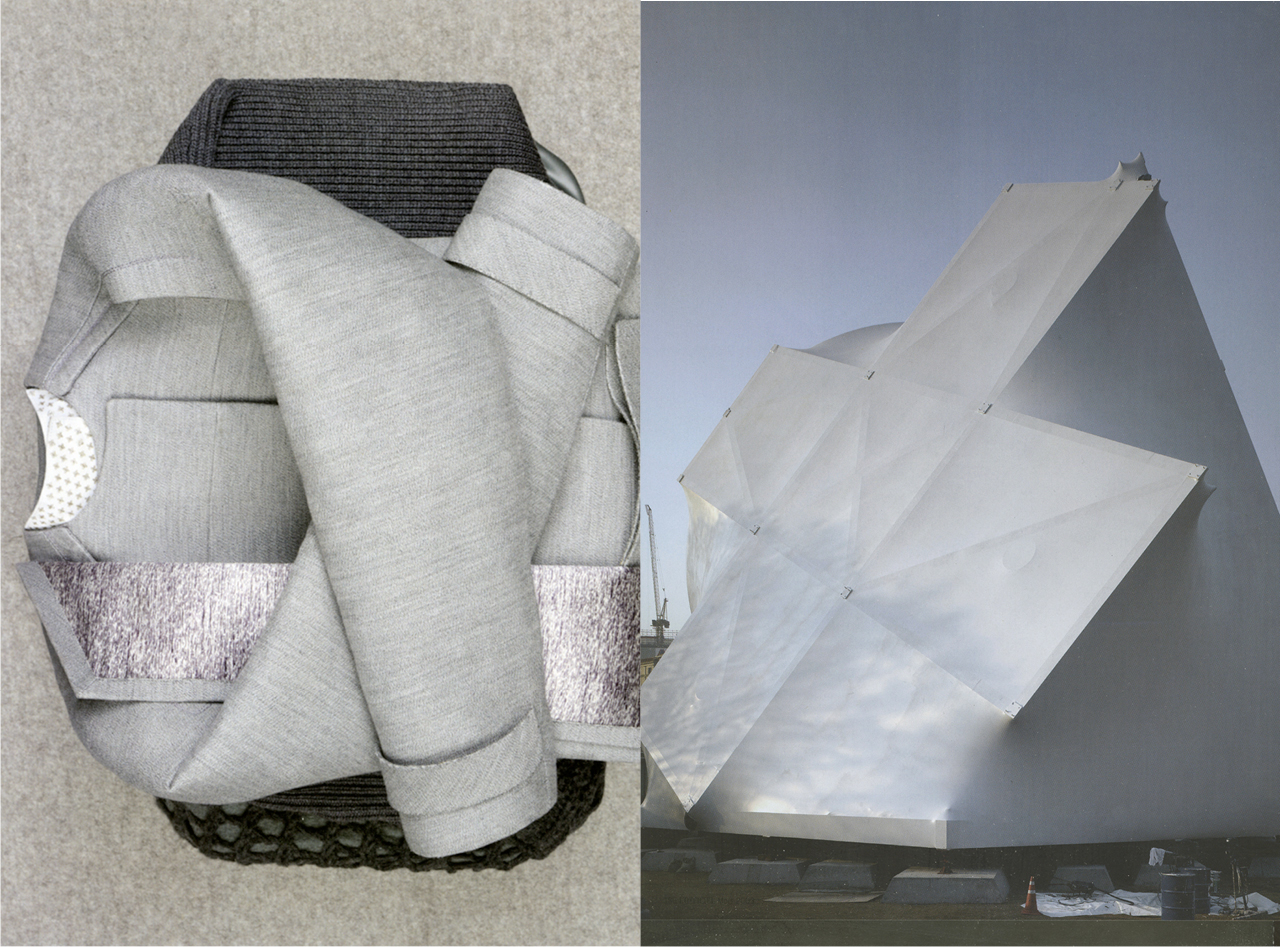
fashion by balenciaga building by rem koolhaas
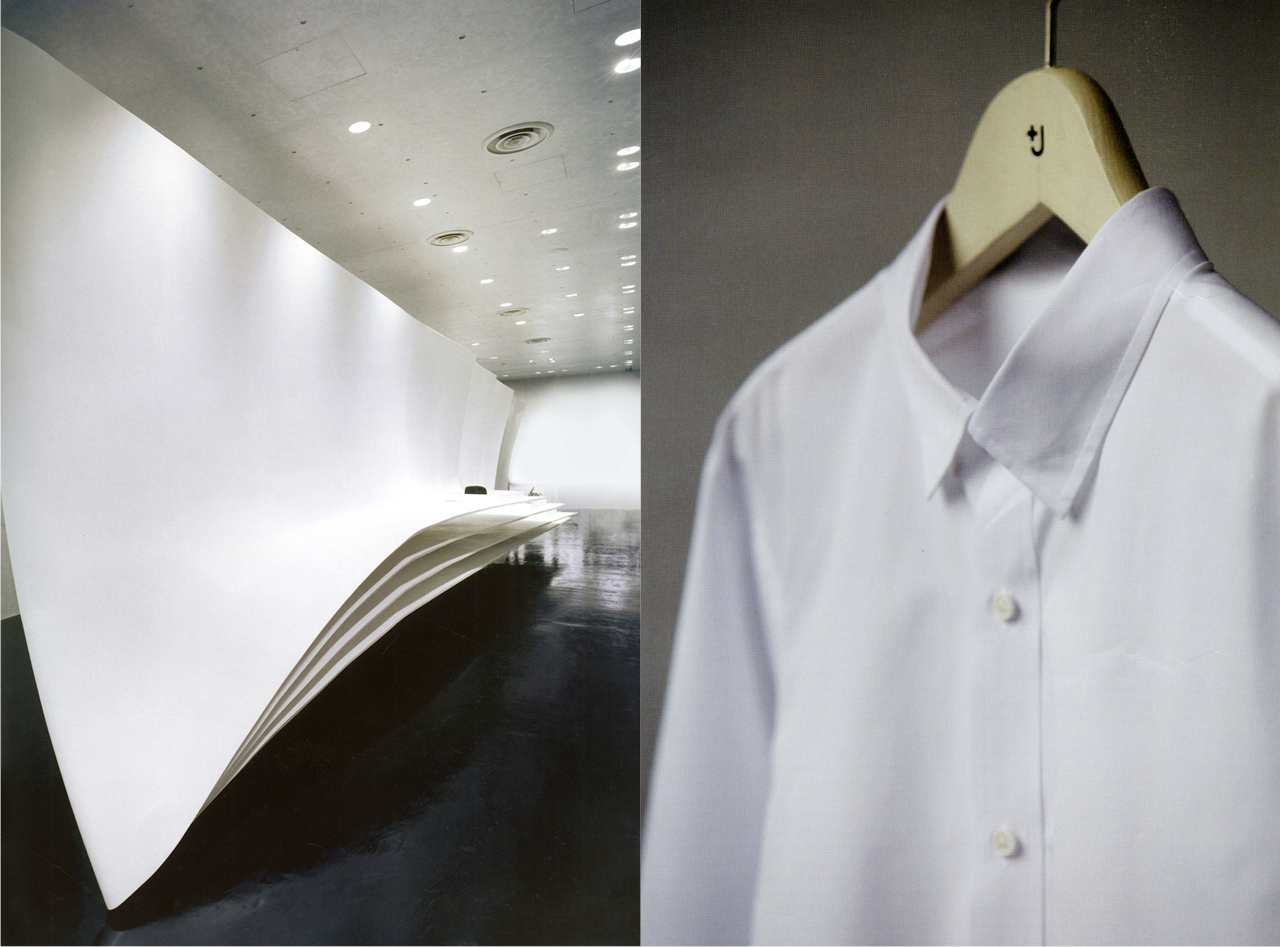
design by zaha hadid, photo by michael zalewski Fashion by jil sander for uniqlo
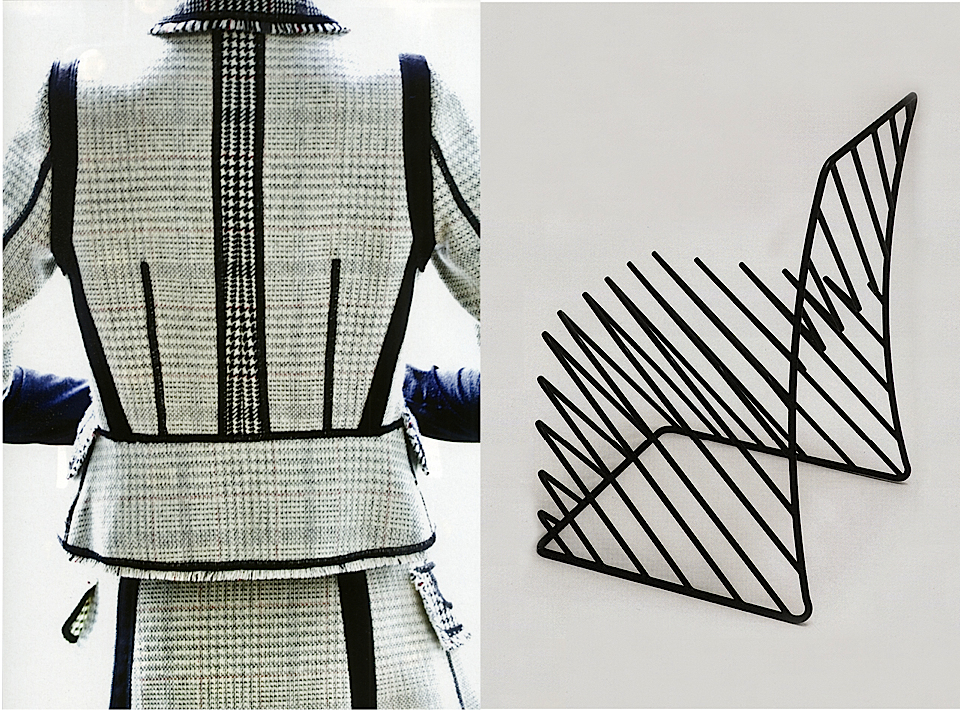
photo by but-sou lai . ‘21400 mm’ chair by nendo
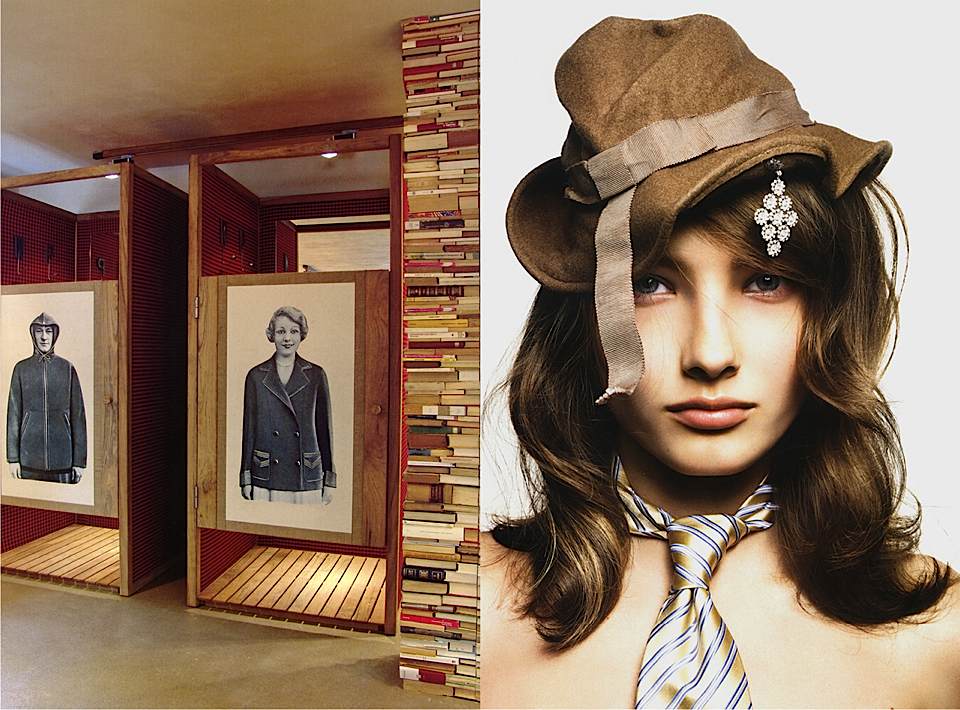
photo by michael zalewski
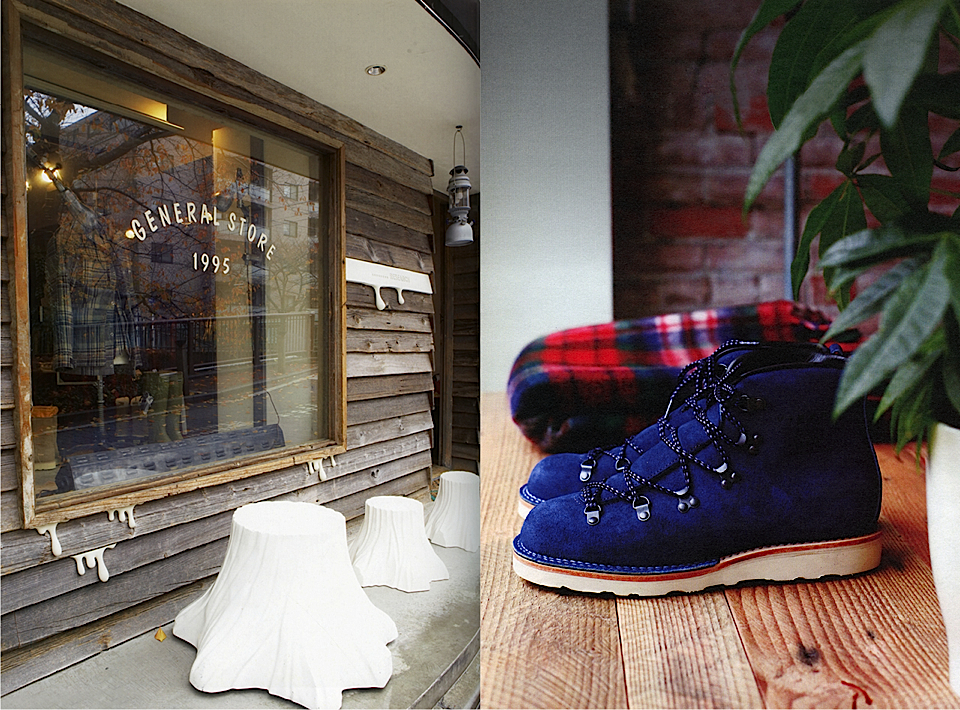
photo by michael zalewski. fashion by viberg hiker
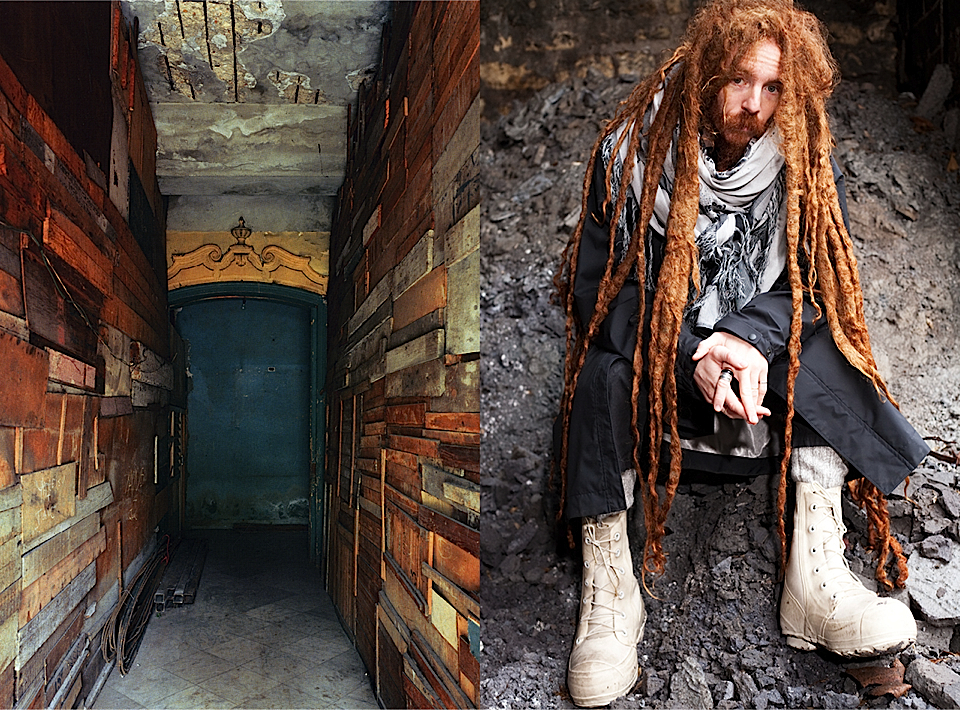
left : photo by robert polidori - right : photo by marie taillefer
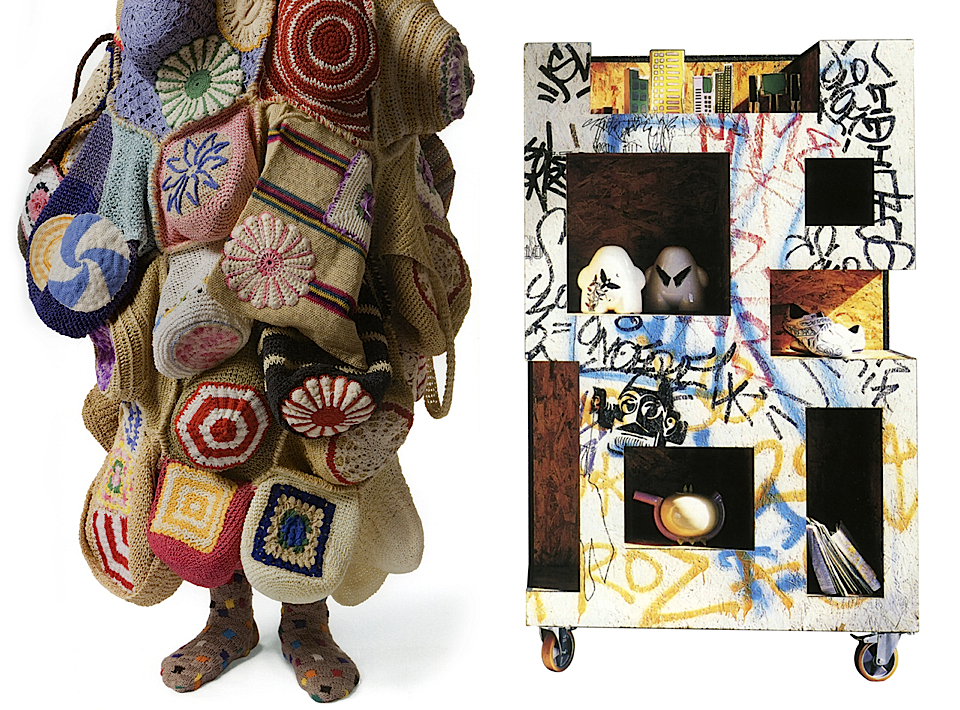
art by nick cave design by ryan frank
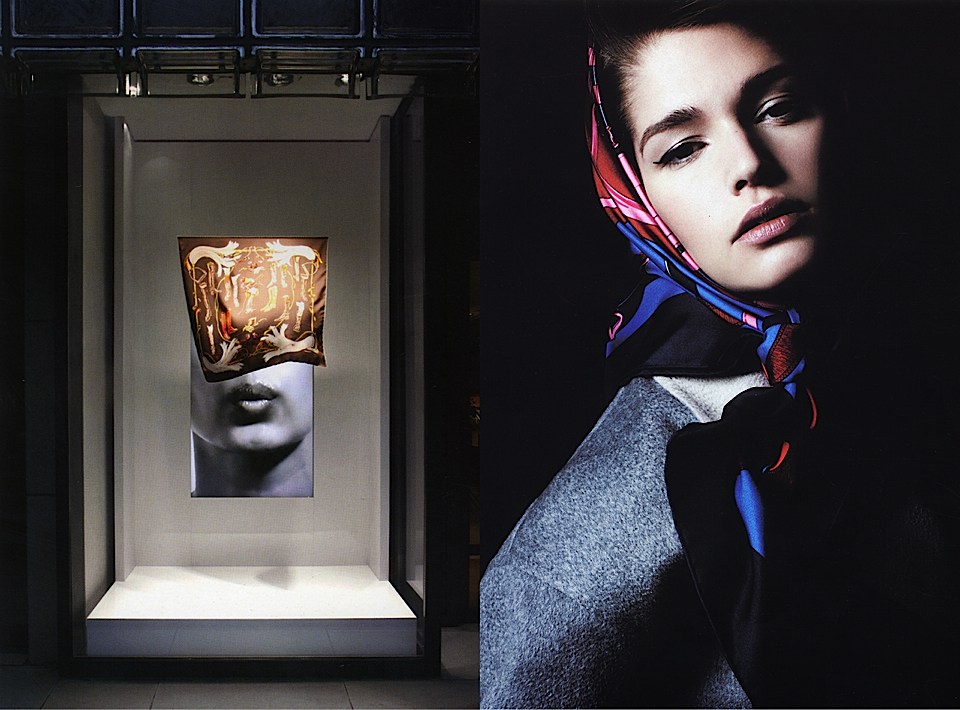
left : design by tokujin yoshioka - right :photo by antonin guidicci

left: photo by desirée sadek - right: photo by sacha van dorsen
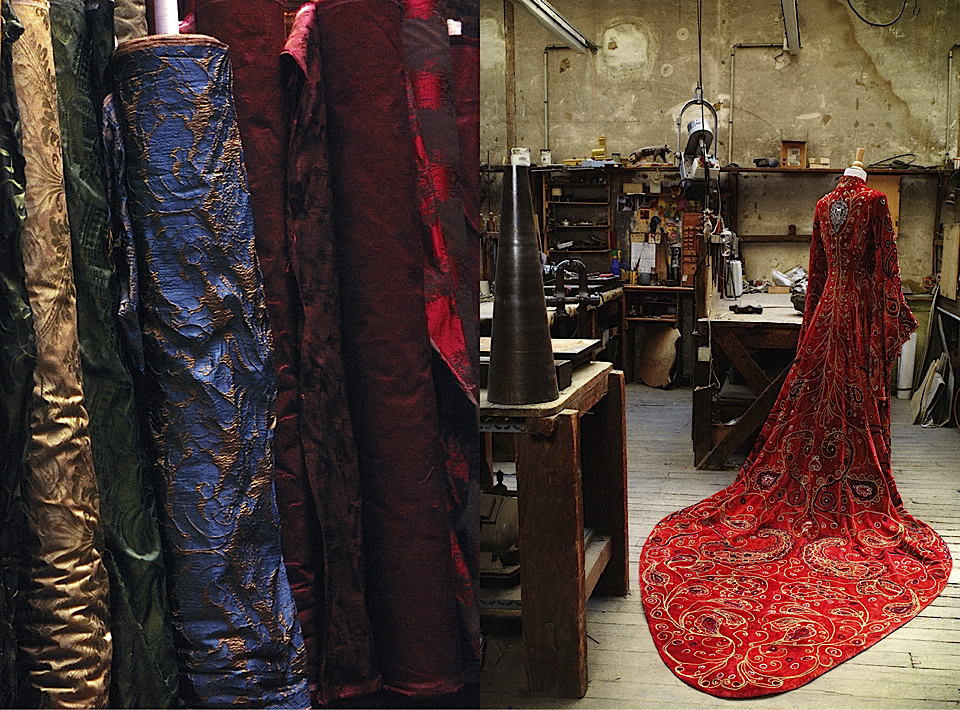
- design frank sorbier, photo by patrick gries
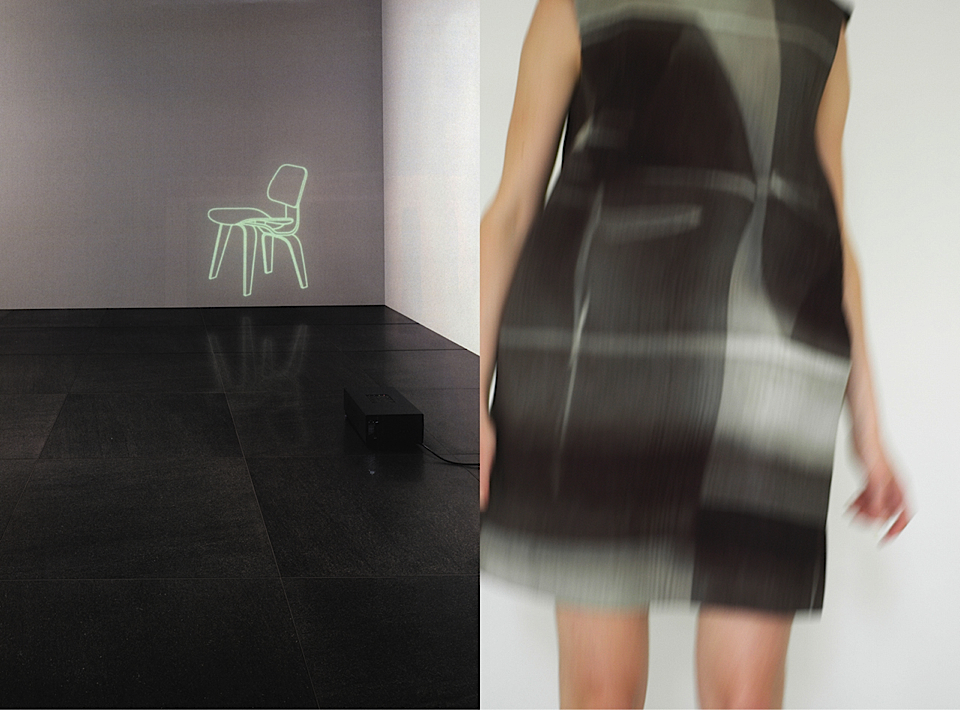
design by dcw eames
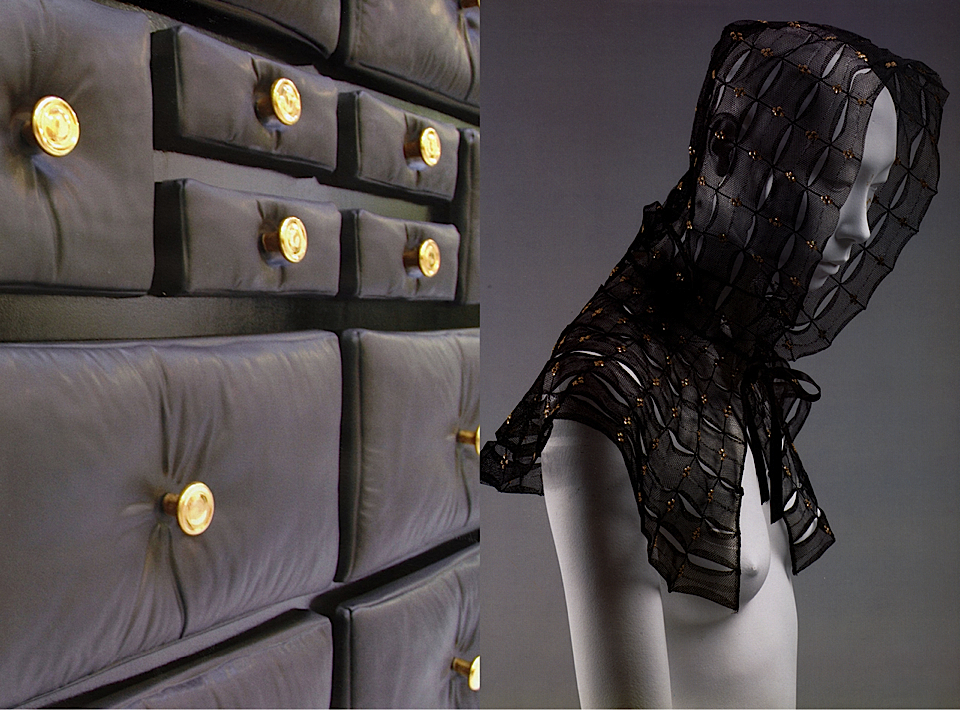
design by kiki van eijk fashion by lanvin
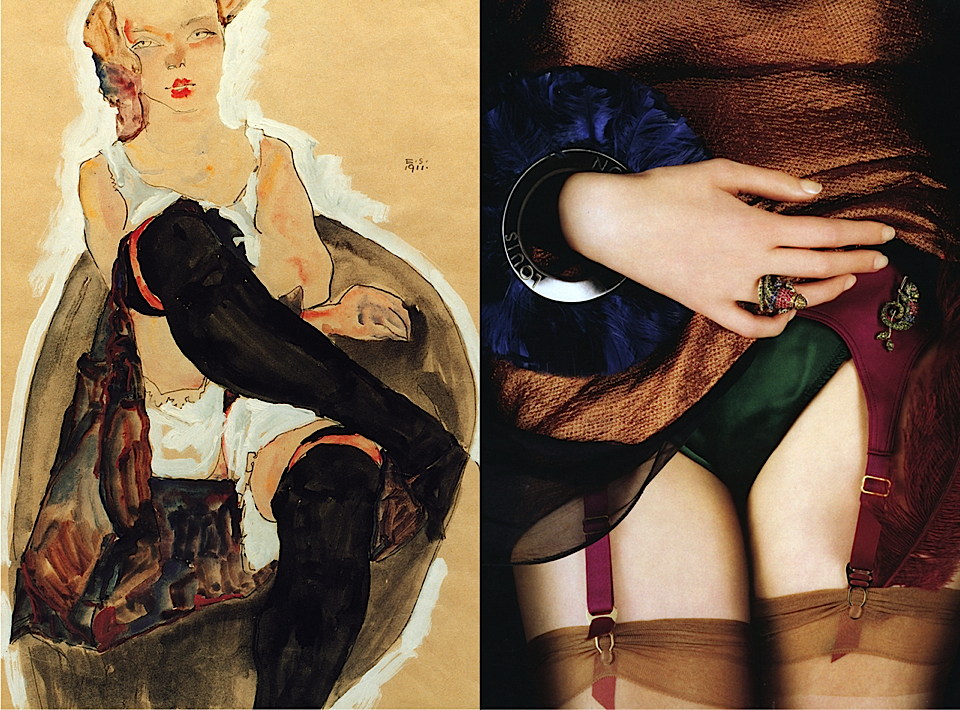
art by egon schiele
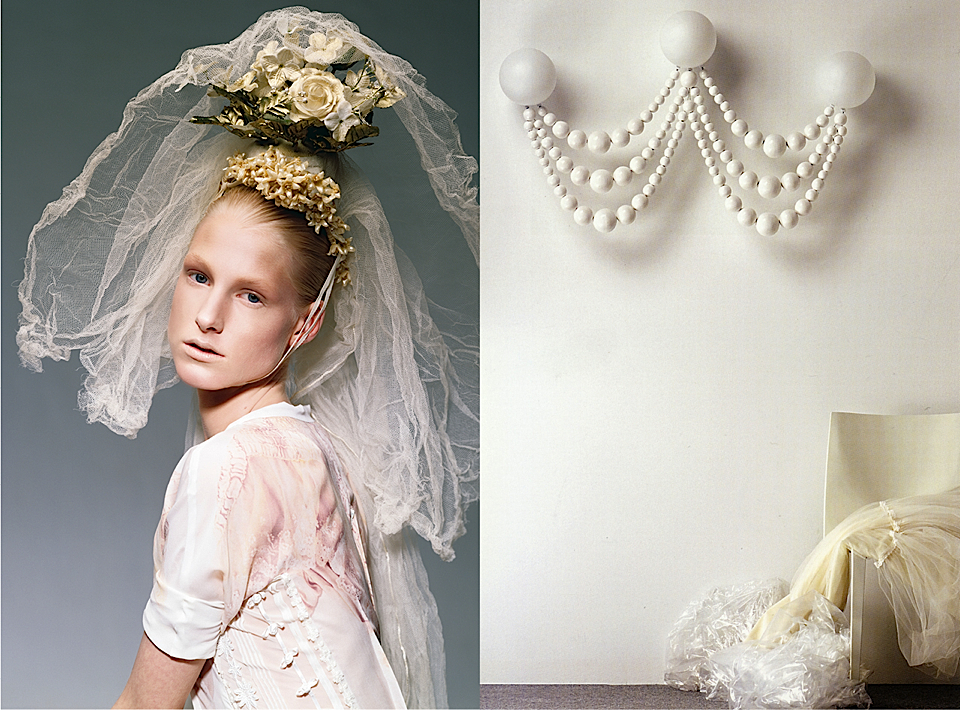
photo by wendelien daan design by hanna brogard
rethinking retail
Lidewij Edelkoort has forecast that brands will need to rethink retail in 2012 if they want to recover from what has become the worst economic downturn in living memory. Outdated formulas and old-fashioned formats will be replaced by anticipated service, innovative store experiences and edited online retailing: "Shopping will need to become a trip within our inner selves to satisfy our complex needs and wishes and therefore needs to be addressed in a truly innovative manner, to reach the consumer on another, more private level. Imagination, improvisation, intelligence and humour are needed to redefine the shopping experiences of tomorrow".
The National Retail Federation (NRF) sought to do precisely that at its Annual Convention & Expo in New York (January 15-18, 2012): to engage and involve the consumer to redefine retail's new rules. Logistics and technology companies offered smarter ideas at their stands, while Bill Clinton brought an inspired perspective as keynote speaker. Emmanuelle Linard and Philip Fimmano visited the fair and saw how new advancements will soon allow shoppers to use their hands to become free and fluid.
Cisco's new StyleMe interface is ready for the market, soon to be trailed at John Lewis' department stores in the UK. This virtual dressing room allows customers (or "guests" as they are now called) to try on many different garments within a short amount of time.Through movement recognition technology, hand gestures in space allow guests to browse for items themselves or receive suggestions to combine, colour and customise their look.
Guests can then share photos with their friends, search stock in other stores and of course, try the garments on in real life.
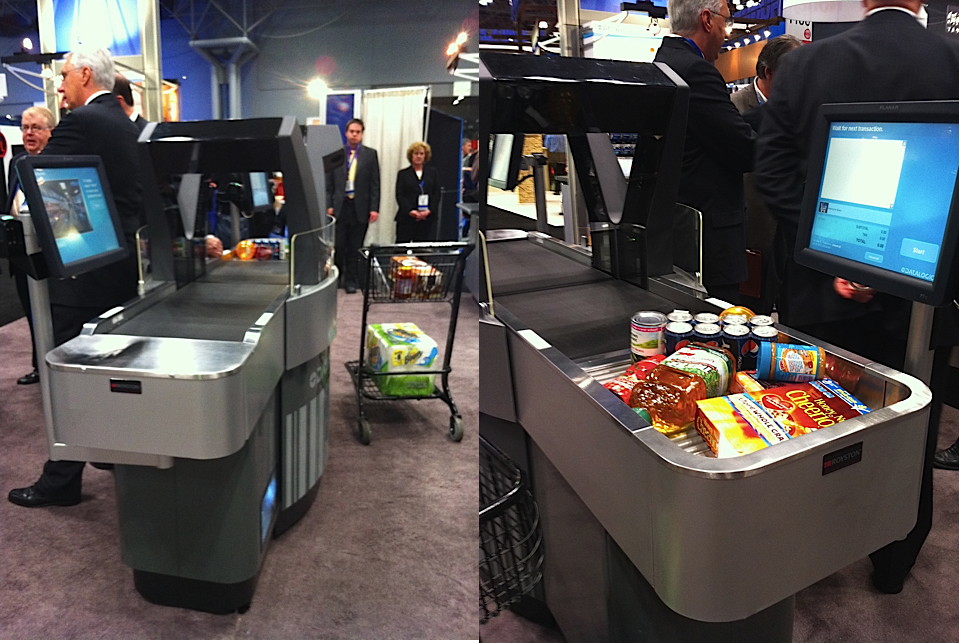
photos Philip Fimmano
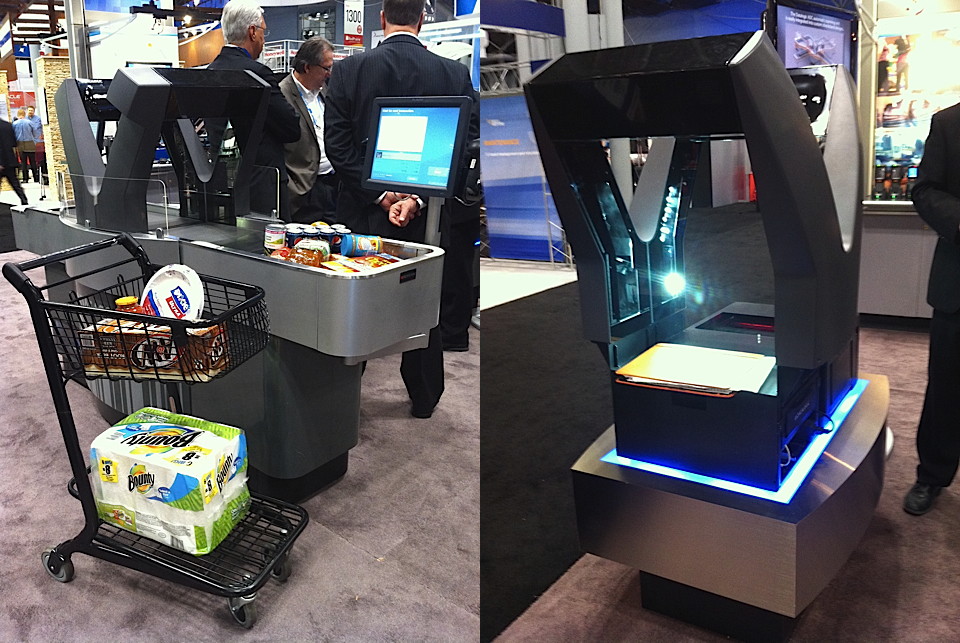
photos Philip Fimmano
Datalogic is a company that develops Point Of Sale tools such as scanners, computers and payment processors, before reselling these products through technology partners such as IBM. Its new and innovative supermarket belt (a concept still currently being finalised) will offer customers who accept self-service a speedier check-out experience.
Leaving the barcode behind, products will be image-recognized by the scanner at a very rapid pace, entirely paid for by the time the customer has finished packing. Though impersonal, this fun-to-use tool will turn the check-out into one fluid movement.
black
black is dominating fashion design since the japanese designers came to europe in the middle of the affluent eighties with a message of doom and disaster expressed with distressed textiles. at the same time the punk movement sang the no future message dressed in other, equally distressed textiles and leathers. holes and safety pins professed the difficult future.
then black became the norm, the only way to be and to dress. the streetscape looked like a murder of ravens or a flock of black sheep all walking in the same black and bleak direction. at that time the fashion crowd looked as if it just stepped out of a huge chinese ink pot.ever since black has established itself as the number one fashion colour raking in the benefits.
going back in time, black became the symbol of a certain bourgeoisie with the revival of the universal little black dress, going out of its realm fashion embraced a hell’s angels aesthetic and going on as usual the left bank sense of style initiated in the time existentialism and fimed by the nouvelle vague continued to seduce asian and french women.
the french couture and luxury industries do trust black. black has become our best friend and alley, the colour we can trust and rely on. no longer just a colour black has become our armour, shielding us from the hostile outside world. black has become our mental burka hiding our inner selves and making us all equal to the world.high end or low end does not longer matter, black is ironing out all flaws and differences in the eyes of the world. this all black store is dedicated to the armour of black in the symbolic and aesthetic sense of the word. in a world of ever more aggression, pollution, threads and abuse the carapace of heavier weaves in black is able to give us the strength and attitude to fight and survive. for some consumers black becomes a way of eccentric expression able to blend all brands. the fabrics are all double weaves, quilts and piques in wool and silk and skin to create heavier weights and interesting surfaces able to capture the light in order to make black come alive. lidewij edelkoort
introduction
We share with you Lidewij 's introduction to her new season: SHOPPING fall-winter 2012-2013..
2011-07-05 09:21:39
2011-06-17 19:44:38
launch
Paris, february 2011 Lidewij Edelkoort welcomes clients and friends to present her new season: SHOPPING, winter 2012-2013
2011-06-25 16:17:59
2011-05-25 12:52:55

